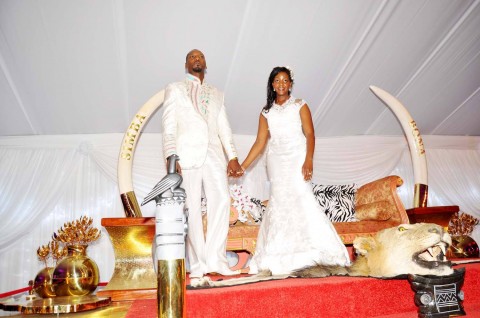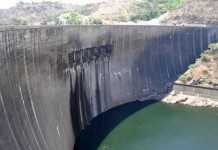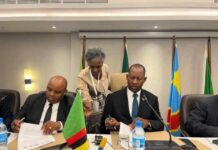

Zimbabwe is $11 billion in loan arrears, it just lost a hoped-for bailout from China, and the southern-tier African nation is now grappling with the fallout of floods and the breach of a dam weeks ago that left 60,000 people marooned.
Since it no longer qualifies for World Bank and IMF loans, the Mugabe regime is pleading around the world for $20 million in emergency funds to cover the disaster.
Yet it also now unfolds that President Mugabe used $16 million in taxpayer funds in recent weeks to cover his birthday party, his daughter’s wedding, and for giant statues of himself to be built by North Korea that commemorate his uninterrupted rule since 1980, and his status as father of the nation.
The Mugabe spending list, which dribbled out in recent days — has shocked many, since public spending on the president’s family is larger than the immediate cost to rescue and aid the flood victims, not to mention a widening number of homeless and hungry in a country that used to be a breadbasket.
The appearance of excess has brought a new grassroots grumbling at the gap between the original liberation ideology of Mugabe and his behavior today.
The spending surfaced at a time when reports of Mugabe ministers salaries, some of which top $40,000 a month, are in contrast with the average salary of Zimbabweans, at $285-$300 a month, and just after a plan to raise teacher’s pay by $79 a month fell through.
Mugabe’s 90th birthday bash on Feb. 23, for example, where the president cut a cake in front of 10,000 people at a stadium in Harare, and where 90 beasts were killed and grilled for the occasion, cost more than $1 million.
The cost of Bona Mugabe’s wedding on March 1, attended by the heads of state of South Africa, Zambia, and Equatorial Guinea at Mugabe’s private home in Harare’s plush Borrowdale suburb, cost $5 million.
Just after the wedding, plans leaked out that Mugabe’s Zanu (PF) government clandestinely signed North Korea, one of its old friends, to build two statues of Mugabe at an estimated cost of $5 million.
The statues were commissioned by Zimbabwe’s minister of local government, Ignatius Chombo. One is a nearly 30-foot high bronze image worth $3.5 million to be placed in Harare; the other is a $1.5 million version to be placed in a $3.8 million museum to be built in Mugabe’s rural Zvimba home, in Mashonaland West. Building statues of leaders is something North Korea has considerable experience doing.
“Mugabe and his government have lost it and all they care about now is the accumulation of wealth and strengthening their hold on power,” says Simba Makoni, Mugabe’s former finance minister who now leads the small opposition Mavambo-Kusile-Dawn party. “I do not think that Mugabe and the people who surround him now care about the country’s economy anymore. Their actions show a lack of willpower to make the country better. They are no longer the same people who fought for and delivered independence [from Great Britain] in 1980.”
Back in November, the Mugabe government said it had an inside track on a $30 billion bailout from China. The amount is whopping, considering that Zimbabwe’s annual budget is now some $4.5 billion a year. Yet the anticipated Chinese bailout has since been steadily reduced in Harare’s telling: to $10 billion, then $3 billion, $400 million – and then zero, according to China’s ambassador to Harare in recent days.
Meanwhile, in an odd backdrop to the spending, Mugabe’s wife, Grace Mugabe, has added to her takeover of a citrus farmed owned by Zimbabwe Stock Exchange-listed Interfresh Holdings. Mugabe’s first lady helped herself to some 4,000 acres of the Mazoe Citrus Estate farm last year, leaving 50 families homeless and then at the turn of this year added another 2,000 acres. The corporate write off of assets is figured at $6 million.
Ms. Mugabe told reporters the added takeover of acres was needed to expand a nearby orphanage.

 JOIN DRIVERN TAXI AS PARTNER DRIVER TODAY!
JOIN DRIVERN TAXI AS PARTNER DRIVER TODAY!










